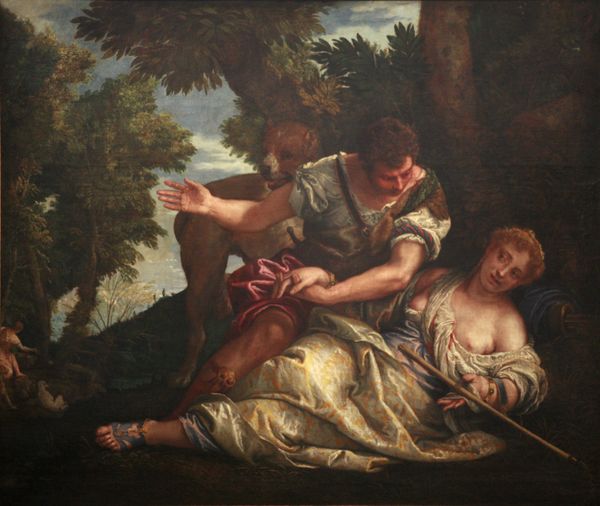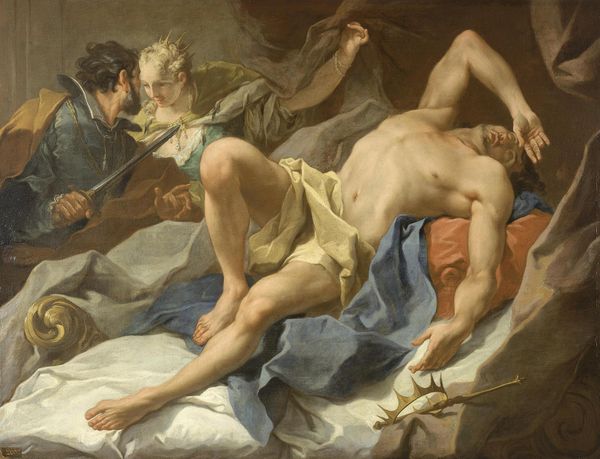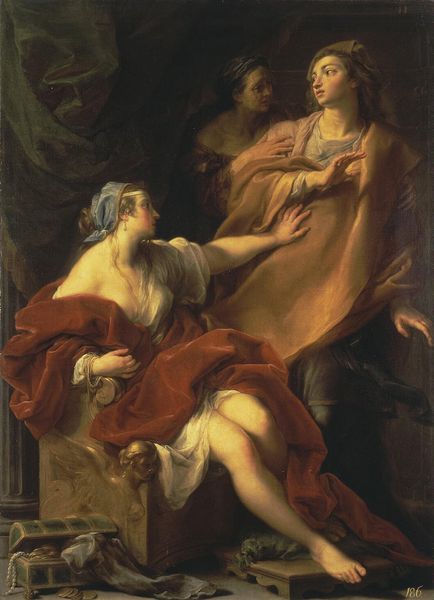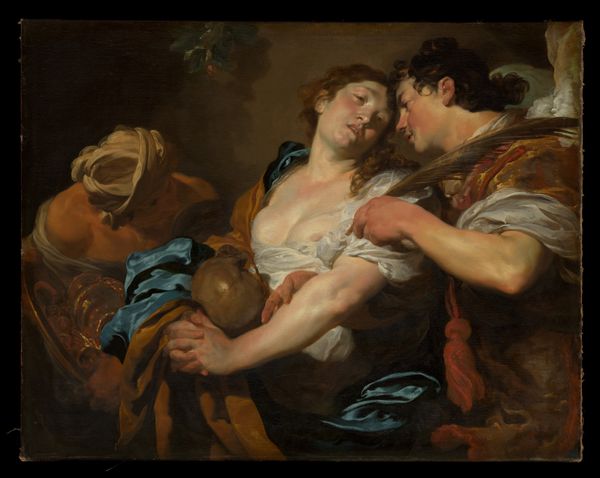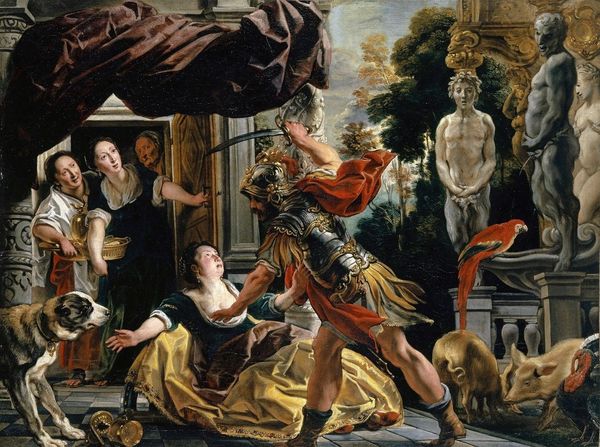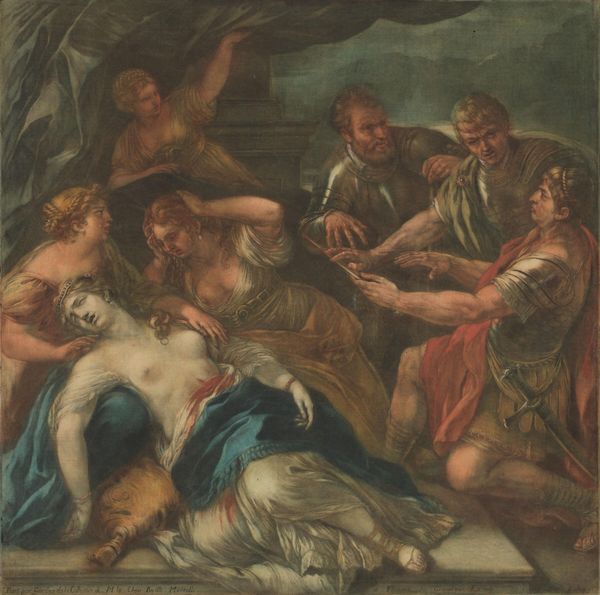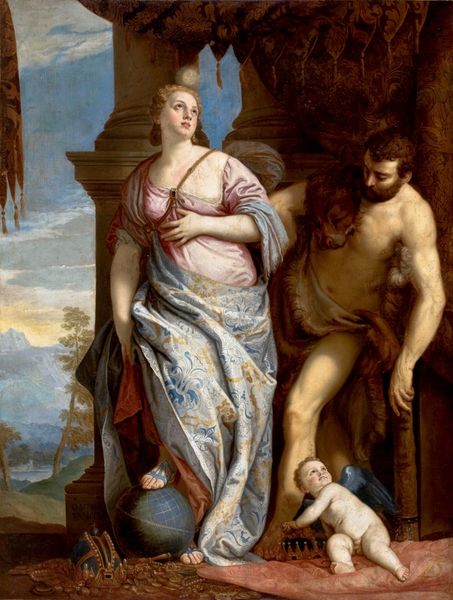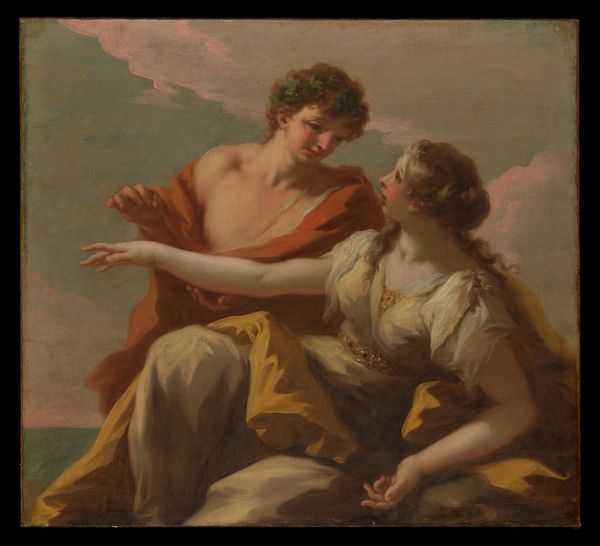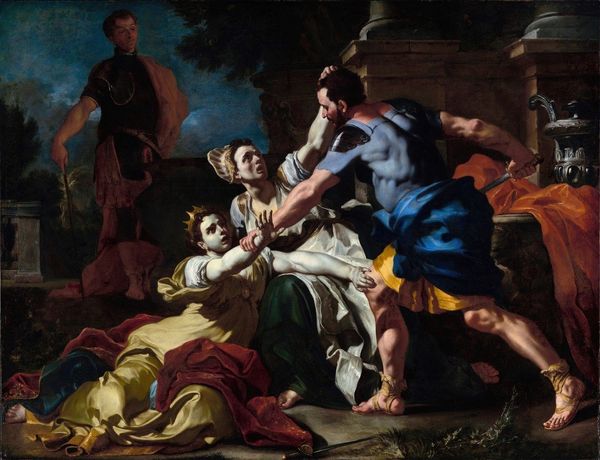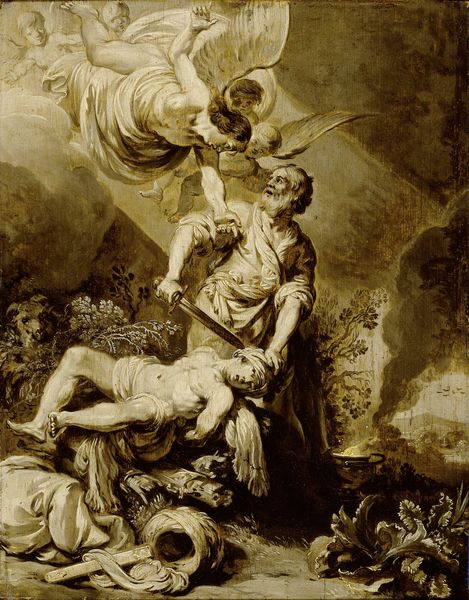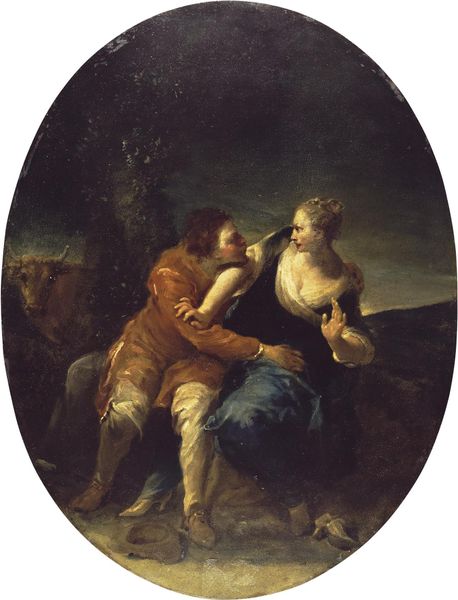
painting, oil-paint
#
portrait
#
allegory
#
narrative-art
#
baroque
#
painting
#
oil-paint
#
figuration
#
oil painting
#
mythology
#
human
#
history-painting
#
portrait art
Copyright: Public domain
Curator: We are standing before Giuseppe Maria Crespi’s “Tarquin and Lucretia,” painted around 1700 using oil paints. What strikes you immediately about this piece? Editor: The dramatic tension is palpable. It’s heavy with impending violence and violation. The chiaroscuro lighting enhances the unease. The woman's expression is wrenching, capturing that stark terror of absolute powerlessness. Curator: It's fascinating how Crespi frames this particular moment, steeped as it is in sociopolitical undertones. The narrative itself is rooted in Roman history, telling the story of Lucretia, whose rape by Tarquin, the Etruscan king's son, precipitates the overthrow of the Roman monarchy and the establishment of the Republic. Editor: Exactly. It's not merely a historical painting; it’s a loaded depiction of male authority and its horrific abuses. Looking at it through a feminist lens, the image painfully reflects a historical legacy of sexual violence used as a tool for political upheaval and control. Lucretia becomes a symbol, perhaps an unwilling one, for the fight against tyranny, and the creation of a new civic order. Curator: Crespi, known for his innovative approach, avoids the theatrical grandeur typical of baroque art. His is a more intimate, visceral rendering. Editor: Yet, this intimacy intensifies the discomfort. By stripping away the grandiosity, Crespi confronts us with the stark reality of the assault. The rose that has fallen to the ground, and even the positioning of Tarquin's hand stifling Lucretia’s protest, contribute to its uncomfortable portrayal of dominance and subjugation. I can't help but wonder, viewing this from a modern perspective, how it might function as a tool for critical examination and education? Curator: Indeed. By confronting such narratives, institutions like museums take an active role in public dialogues concerning power, gender, and ethics. We consider how displaying such a difficult piece today might provide valuable opportunities to grapple with historical injustices and encourage empathetic discourse. Editor: I think situating this artwork alongside contemporary feminist writings and works by modern artists exploring similar themes might make a strong and poignant curatorial statement. Curator: It's been a worthwhile experience, thinking critically about Crespi’s rendition, recognizing it’s place in the grand narrative and the challenging socio-political questions it raises. Editor: I agree. Reflecting on the history that precedes us compels a crucial reassessment of contemporary challenges.
Comments
No comments
Be the first to comment and join the conversation on the ultimate creative platform.
